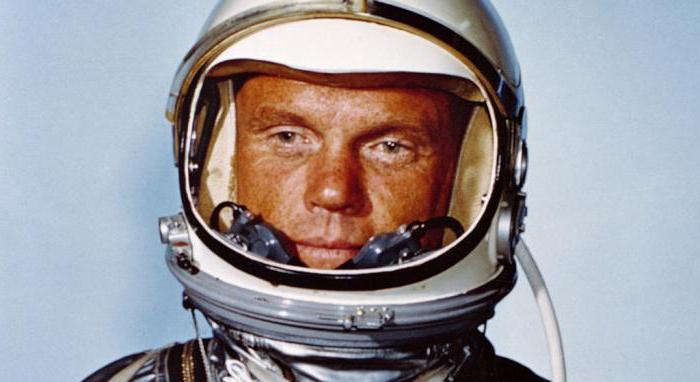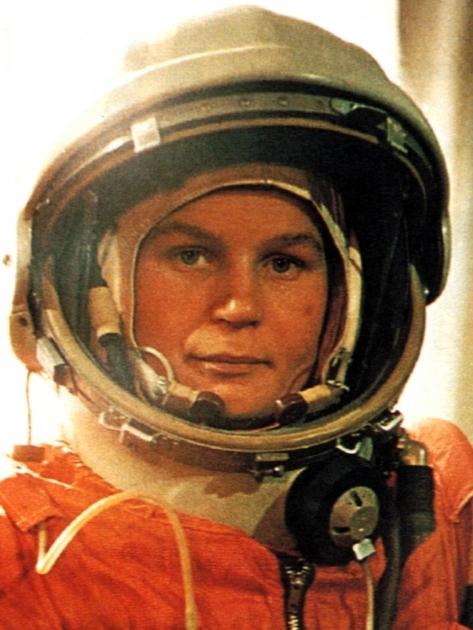For many, the most famous personalities inspace exploration are Yuri Gagarin and Neil Armstrong. The representative of the Soviet Union first flew into space and returned alive, while the United States landed on the moon.
However, Armstrong is not the first American cosmonaut. They are considered a completely different person. About his biography, career and mission will be discussed in the article.
Preparation for the selection of astronauts

Не секрет, что обе державы были главными competitors in the issue of space exploration. In the USA, this problem was dealt with at the Langley Research Center (Virginia). However, in addition to the design and implementation of the spacecraft, it was necessary to form an astronaut squad.
Preparations for this began in November 1958.The first detachment of US astronauts was to be selected in several stages. At first, we wanted to select one hundred and fifty candidates, gradually sifting out of this group of people according to the results of medical and psychological tests, as well as nine-month training. As a result of the selection, six astronauts were to remain.
A significant interference in the search for candidates was the decision of President Dwight Eisenhower, who saw the best candidates only among test pilots. From among them began to choose.
Astronaut Selection
By the beginning of 1959 began the selection. Experts were guided by the following criteria:
- height - up to 180 cm;
- perfect physical condition;
- age - up to forty years;
- education - technical (bachelor);
- special education - test pilot;
- flight experience - not less than one and a half thousand hours.
According to these criteria, NASA selected 110applicants, from them the group in number of 36 people for further tests was chosen. 32 candidates agreed to undergo a thorough medical and psychological examination. One of them was eliminated, so 31 pilots arrived at the Research Center. Further selection was very difficult. In the end, the experts selected not six, but seven people for the flight.
The pilots were called astronauts, and their names were officially announced on April 9, 1959. Among them was the first American astronaut.
The first seven with Alan Shepard

All astronauts were family men with an engineering background, in excellent physical shape. Their age ranged from 32 to 37 years.
List of the first seven with a military rank:
- John Glenn is a lieutenant colonel.
- Gordon Cooper, Virgil Grissom, Donald Slayton - captains.
- Alan Shepard, Walter Schirra - senior lieutenants.
- Scott Carpenter - Lt.
Among them was the one who deserves the title"the first American astronaut". Men began to prepare for flight, first at the base of the Research Center in Virginia, then in Houston (Texas). Each representative of the sevens had their own specialization. The protagonist of the article was trained to work in rescue and tracking systems.
Shepard Education
Alan was born on 11/18/1923 in the city of Derry. At the age of 36, he became one of seven astronauts selected by NASA for a space flight. In many ways, this contributed to his education.
The future astronaut Alan Shepard at one time graduated from the College of the Academy named after Admiral Farragut, Naval Academy with a Bachelor of Science degree, Naval College.
Career pilot
After receiving a bachelor's degree, Alan Shepard became a naval officer. At this time, the Second World War was still going on, so he was assigned to the destroyer and sent to the Pacific Ocean.
In 1947 he received the rank of a pilot and wassent to serve in the fighter squadron. In 1950, the pilot entered the test school. After completing the training, he took part in flight tests, including experiments to develop an in-flight refueling system. For five months, the future cosmonaut was an instructor for test pilots.
Before becoming an astronaut, Shepard flew more than 8,000 hours, of which 3,700 were spent on jet planes.
Astronaut career

Первый американский космонавт входил в семерку applicants who were chosen by NASA in 1959. They were preparing for the program "Mercury". His professionalism and high personal qualities enabled him to be the first of the representatives of the United States to reach space and fly to the moon.
He made his first flight in 1961. The trip was short, but so necessary for the United States of America. The capsule ship was called the Freedom-7.
Later, the astronaut was prepared as a backup G.Cooper on the Atlas-9 mission. In 1963 he was supposed to fly to the Atlas-10. The flight was supposed to spend three days, but it was canceled. After that, the astronaut was chosen as the first pilot to the Gemini spacecraft. Having started training, he underwent a medical examination, as a result of which he was diagnosed with an ear disease that disrupts the activity of the vestibular apparatus. Due to Meniere's illness, he was suspended from flying for several years.
In order to return to the preparation for the flight, Shepard had to have surgery on the ear cavity. It was successful, and the astronaut returned to vigorous activity.

Being a forty-seven year old pilot, the oldestmoment by a NASA astronaut, Alan made his second flight into space. He was appointed commander of the Apollo 14. He made the third successful US expedition to the moon. It happened in the period from January 31 to February 9, 1971.
Mercury Redstone with Alan Shepard

According to the Mercury program, Alan Shepard’s flight becamefirst successful launch of a manned spacecraft. It was launched by the Redstone-3 booster. The capsule was able to climb to a height of 186 km and descended into the waters of the United States Atlantic test site. This place turned out to be at a distance of 486 km from the initial starting point.
Unlike the flight of Yuri Gagarin, whomanaged to fly around the Earth in orbit, on May 5, 1961, Alan Shepard only reached space, having spent a little more than fifteen minutes in flight. He became the second person in the world to reach such heights.
Flight targets

The main task of the United States was to get ahead in masteringother countries, especially the USSR. The program "Mercury" involves the implementation of certain goals. Successful was the launch of the system "Mercury-Redstone-3", which was Shepard.
The main objectives of the flight:
- Getting the experience of manned spacecraft during the launch, active flight, state of weightlessness, as well as entry into the atmosphere and landing.
- Evaluation of the pilot’s ability to control the spacecraft, voice communication during the flight.
- The study of human reaction to space flight, primarily physiological.
- The possibility of landing an astronaut and a ship.
The life of an astronaut after the end of his career
At the end of his flight career, Alan Shepard,whose biography is considered in the article, was engaged in social activities. In 1971, he became a delegate to the UN Assembly. At the same time he received the degree of doctors in natural and human sciences.
At the end of the twentieth century, together with two journalists, the famous astronaut published the book Flight to the Moon. For her reasons immediately created a television series.

Shepard died 21.07.1998 at the age of seventy-five. The cause of death was a prolonged illness - leukemia. Five weeks later, his wife Louise died. Their bodies were cremated, and the ashes scattered over the sea.
Interesting facts about the astronaut and his flight
The project that Alan was involved in wasnamed "Mercury". The name was chosen in honor of an ancient Roman mythological creature who was a messenger of the gods and a patron of commerce. In Washington, the name of the project was approved on December 10, 1958.
Отобранных для космических полетов претендентов It was called astronauts. The name was chosen by analogy with the Argonauts, who in ancient Greek mythology floated behind the Golden Fleece, and aeronautics, that is, aeronauts.
Before the flight, Alan was prescribed a strict diet.He was preparing a personal chef. For example, breakfast consisted of orange juice, semolina, scrambled eggs, strawberry jam, coffee with sugar. The list of dishes changed. The cook prepared one portion for the astronaut, and the second kept the day in the fridge in case he had problems with the digestive tract.
A day before the flight, the coffee was removed from the menu due to its diuretic and stimulating effect.
Before launching the astronaut said to himself: "Do not screw it up, Shepard." The media supplemented it a bit by mentioning the words about God. Since that time, many pilots have said a similar “prayer”.

The pilot is located in the capsule ship at 5 o'clock 15minutes, but the flight took place only two and a half hours later. The reasons for the postponement were technical hitch and the cloudiness that appeared, which would not make good pictures of the Earth from space. The ship started at 9 hours 34 minutes. He was watched by 45 million viewers in the United States of America.
The first attempts to reach space were not alwayssuccessful. Envisage all the nuances is very difficult. So, NASA, selecting the most worthy candidates for the flight, did not take into account their usual physiological needs. That is, the spacecraft was not able to relieve the need. Because of this, Shepard had to do it in a suit right during the flight.












